When you describe the classic American dream, what comes to mind? A white house? Two-car garage? Perhaps it’s less material, more about certain freedoms or personal successes? How about a perfectly manicured, green yard space?
For better or worse, the American population has become obsessed with their lawns. They’ve become a status symbol, showcasing position in community and embodying the American dream. Moreover, it’s a symbol of suburb conformity, with many HOA’s establishing rules and neighbors who ensure compliance through passing comments. Sometimes, it goes beyond comments, with fines and even jail time given to those who fail to conform.
However, for something seen as so American, funnily enough, the typical American lawn is not. Instead, it’s a product of European emulation with European grass specimens, which at first, was only for the elite and wealthy. Eventually, the middle-class picked it up, as more became homeowners and it was included as a feature of developments.
In fact, it’s become so pervasive that, according to a research ecologist with the U.S. Forest Service, there is an estimated 163,800 square kilometers of lawn space across the county, including parks and golf courses. This land mass roughly equates to Maine, New Hampshire, Vermont, and Massachusetts-imagine mowing that!
So, what’s the problem with this beloved property feature? Well, there are a few. . .
USAGE OF WATER
On average, per The Lawn Institute, lawns require around 1 inch of weekly rainfall to maintain a lush, green appearance. However, this is more rainfall than many parts of the United States now get. In fact, a third of all residential water consumption is allocated to lawn irrigation, equating to about 7 billion gallons of water daily (making it the largest irrigated “crop” in America).
MONOCULTURE
A monoculture is an environment where one plant grows. Monocultures are typically a product of consumerism, allowing efforts to focus on caring for one specific organism, whatever it may be. Simplicity and efficiency are the driving force behind this method of growing. Although worthy aspirations, this monoculture has disastrous effects on the environment for the following reasons:
- Increased fragility as any disease or pest could wipe out one plant (think Irish Potato Famine)
- Draining nutrients from the soil over time causing an increased use of fertilizer to achieve the lush lawn look
- Requires constant intervention against nature, as it craves diversity-hence the weeds popping up in the yard
- Damaging other organisms by crowding out habitats that once held other vegetation that other organisms used for food or shelter
PESTICIDE/FERTILIZER USAGE
Although pouring or sprinkling fertilizer or pesticides/herbicides in the yard may seem harmless, it can cause problems for the surrounding environment and the organisms that populate it, even you.
In terms of effects on humans, numerous chemicals in lawn-care products have become the subject of concern; two, in particular, are herbicides glyphosate and 2,4-D. The CDC has proclaimed that long-term exposure to either of these chemicals can have adverse effects from nausea to respiratory issues. This glyphosate is the main ingredient in Roundup, a widely used weed killer, and there is debate amongst different health organizations as to whether it could be carcinogenic. However, this ingredient will cease being used in Bayer residential products, the manufacturer of Roundup, within the US by 2023. These health organizations are also now looking at 2,4-D as a potential health hazard and recommend caution in use.
Besides the impact on human health, fertilizers and pesticides also affect the environment. Although the biggest culprits of fertilizer runoff are large farms, residential homes still have an effect, especially on waterways. Nitrogen & phosphate, the main ingredients in most fertilizers, cause algae blooms when it washes into lakes, choking out the aquatic life–resulting in dead zones. In addition, pesticides and insecticides have been shown to be a contributing factor to the reduction in the bee population.
MOWERS
Perhaps the most apparent impact lawns have on the environment is the equipment used to cut them. The fuel-powered equipment contributes to greenhouse gases; however, the mowing frequency is also an essential factor to note. Lawns cut more often, contribute more gases, and also negatively effect diversity and bees. A study by researchers showed that lawns mowed every two weeks had more lawn diversity and a larger abundance of bees.
The mowers contribute to greenhouse gases through their emissions, that further air pollution and climate change progression. These emissions can include things like methane, carbon monoxide, carbon dioxide, and particulates.
SO, WHAT’S THE ALTERNATIVE?
So, if grass isn’t green, then what is? Well, first off, there are ways to maintain your grass in a low-impact way; in fact, your lawn could even become a carbon sink if appropriately treated by. . .
- Keep your grass 3.5 to 4.5 inches tall to encourage deeper roots, which helps to absorb more carbon
- If you need to water, do it sparingly, as daily watering encourages shorter roots
- Use as few pesticides as possible and limit your fertilizer use to only Earth-friendly options
- Limit your mowing to encourage diversity and reduce emissions-waiting 2 weeks between mows
However, if you’re looking for grass alternatives, these are also good options:
- Native gardens: Growing plants native to your area can help to restore the soil and support ecosystems; these also need very little care, as the plants are from the climate.
- Beds: You can always rip up the yard and put in beds or borders with plants.
- No-Mow Lawn: If you want to keep the look of a yard without grass, meaning no mowing, this is possible with ground-hugging plants.
- Eco-Friendly Lawn: If you don’t want to lose the grass entirely, you can always buy a mix that contains drought-resistant grasses, clover, herbs, or wildflowers.
- Hardscape: Lawns can turn into areas with pathways and sitting areas using permeable materials.
These alternatives are not as good:
- Artificial turf: Made using fossil fuels, retains heat, no benefit to wildlife
- Non-permeable materials: Allows runoff, rather than allowing water to permeate the soil
- Invasive groundcovers: Can quickly overwhelm native species
It can be easy to be green, by making responsible choices–homeowners can work to create a more environmentally-friendly yard!
CHECK OUT OUR RECENT POSTS:





